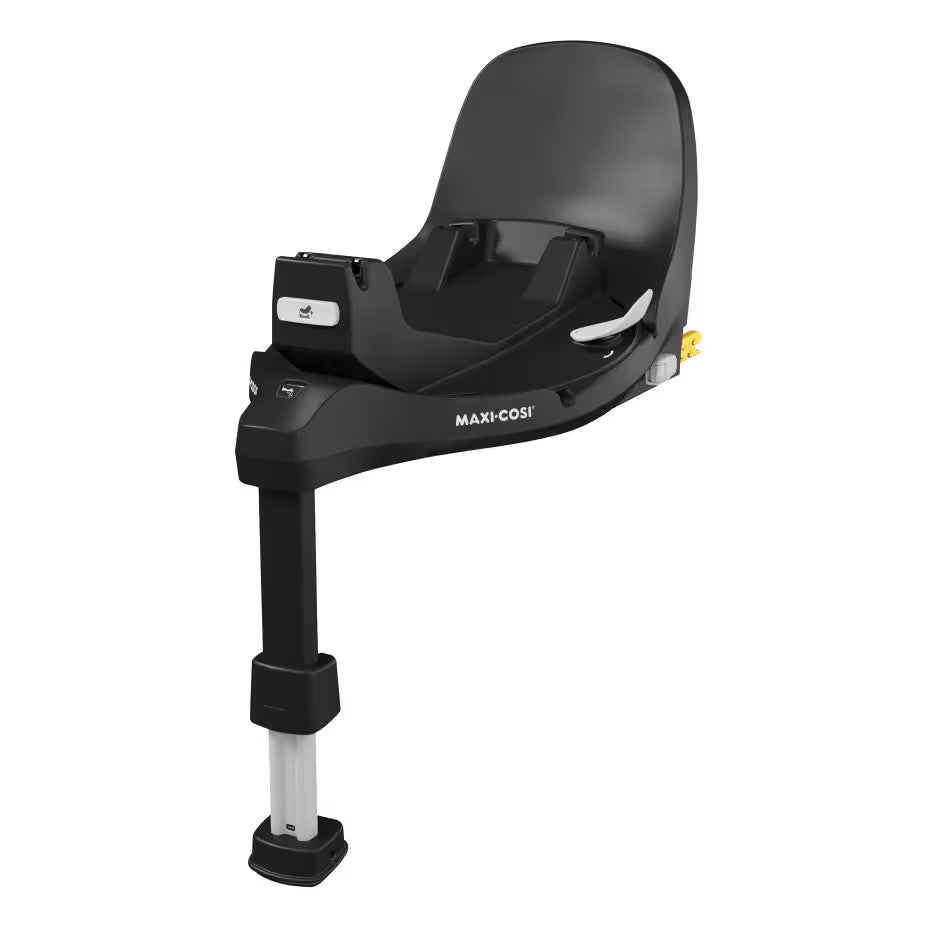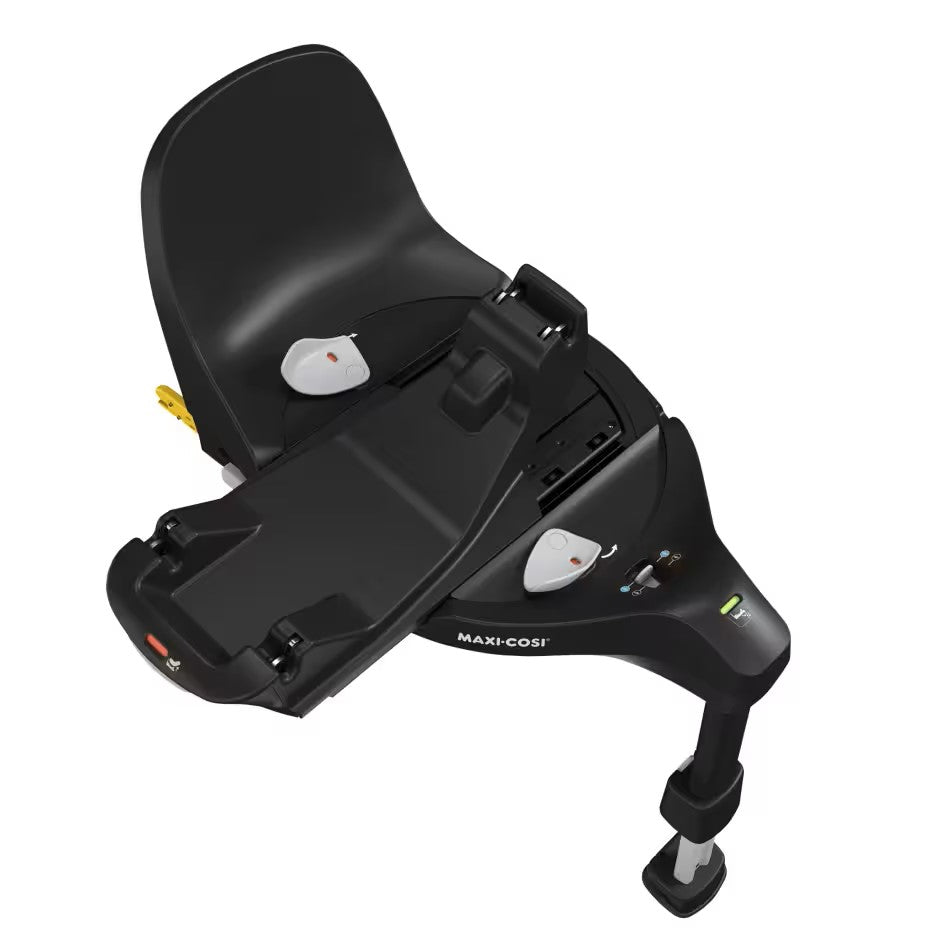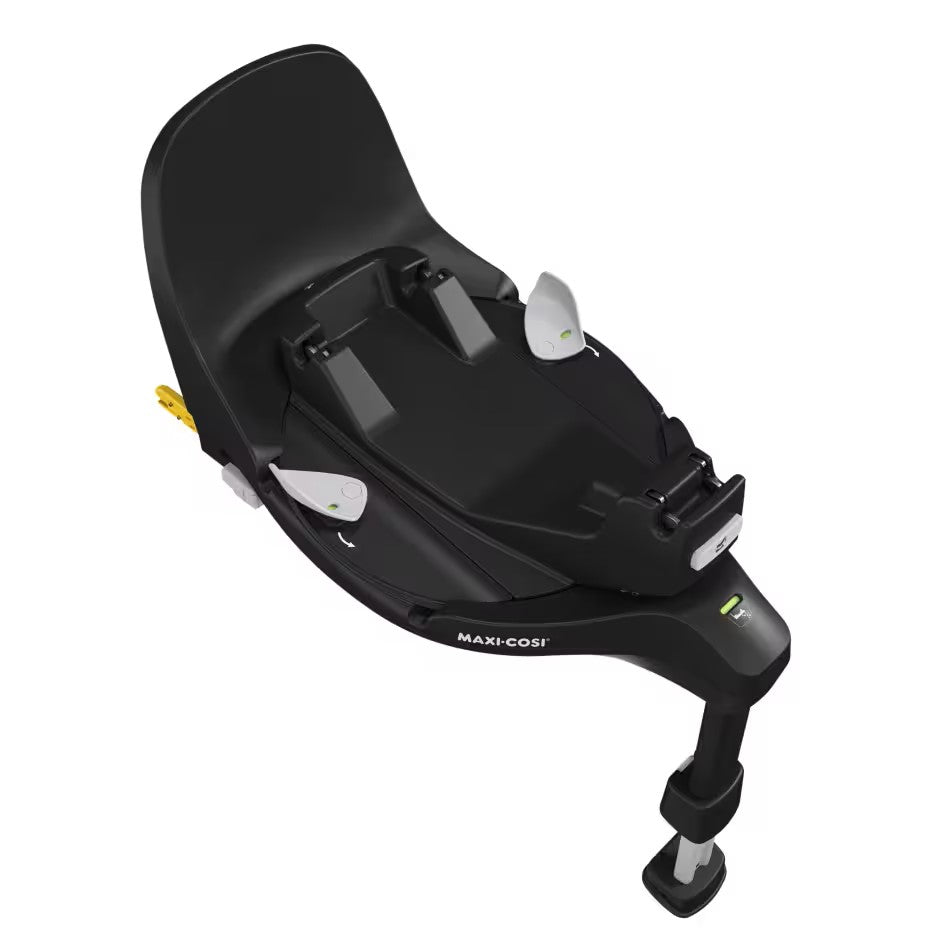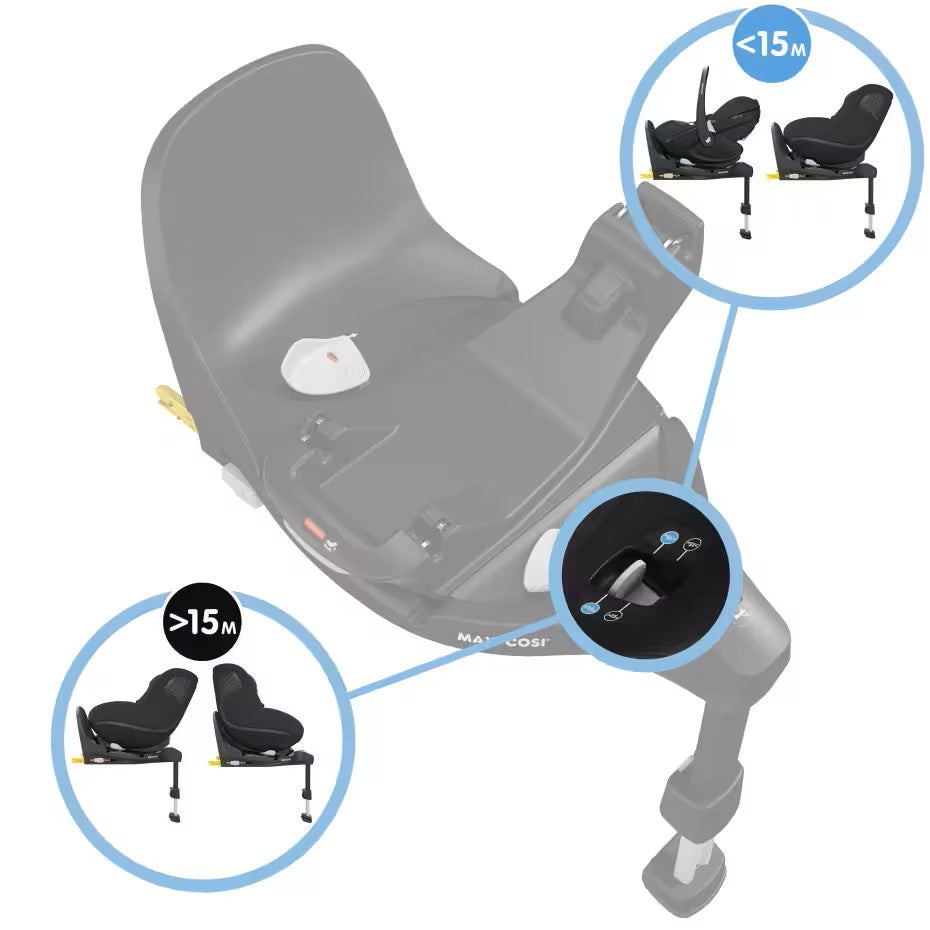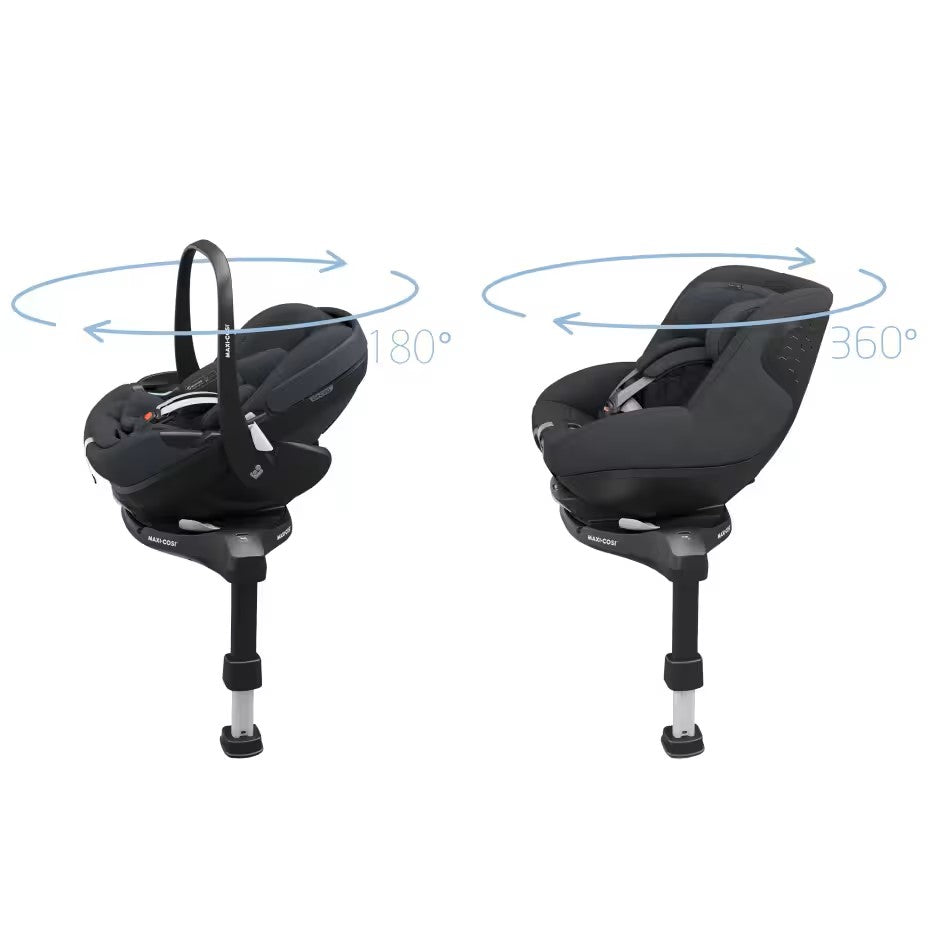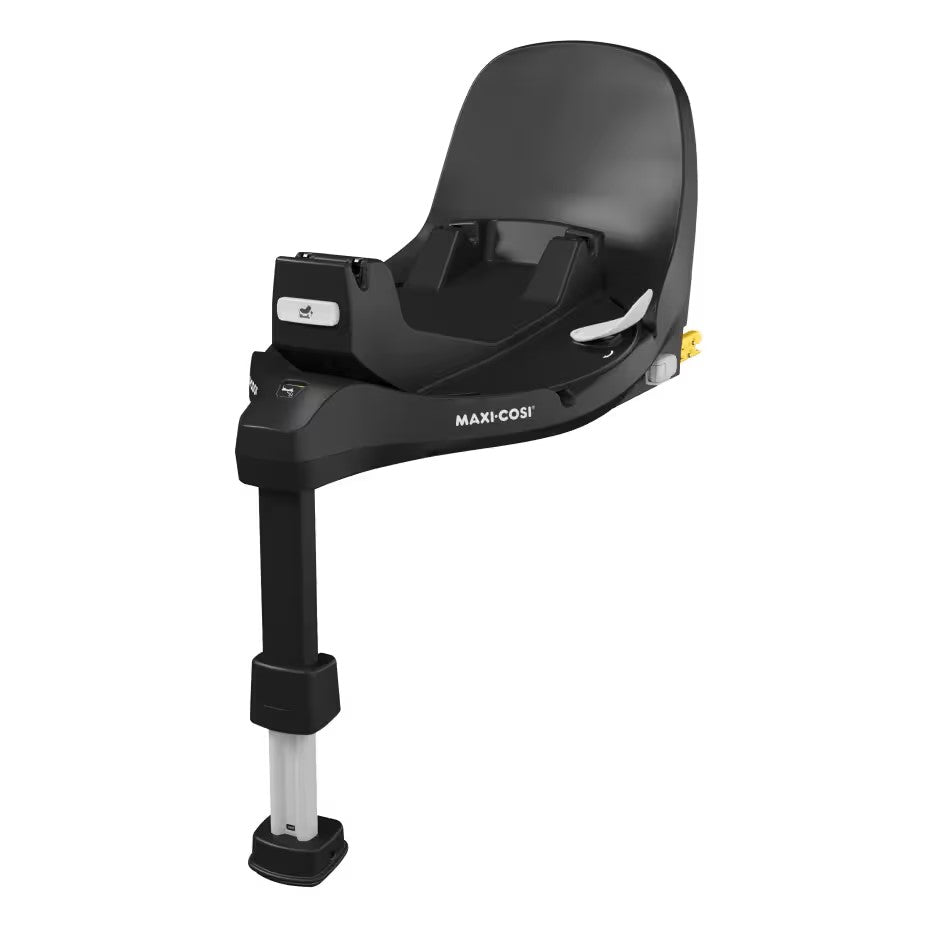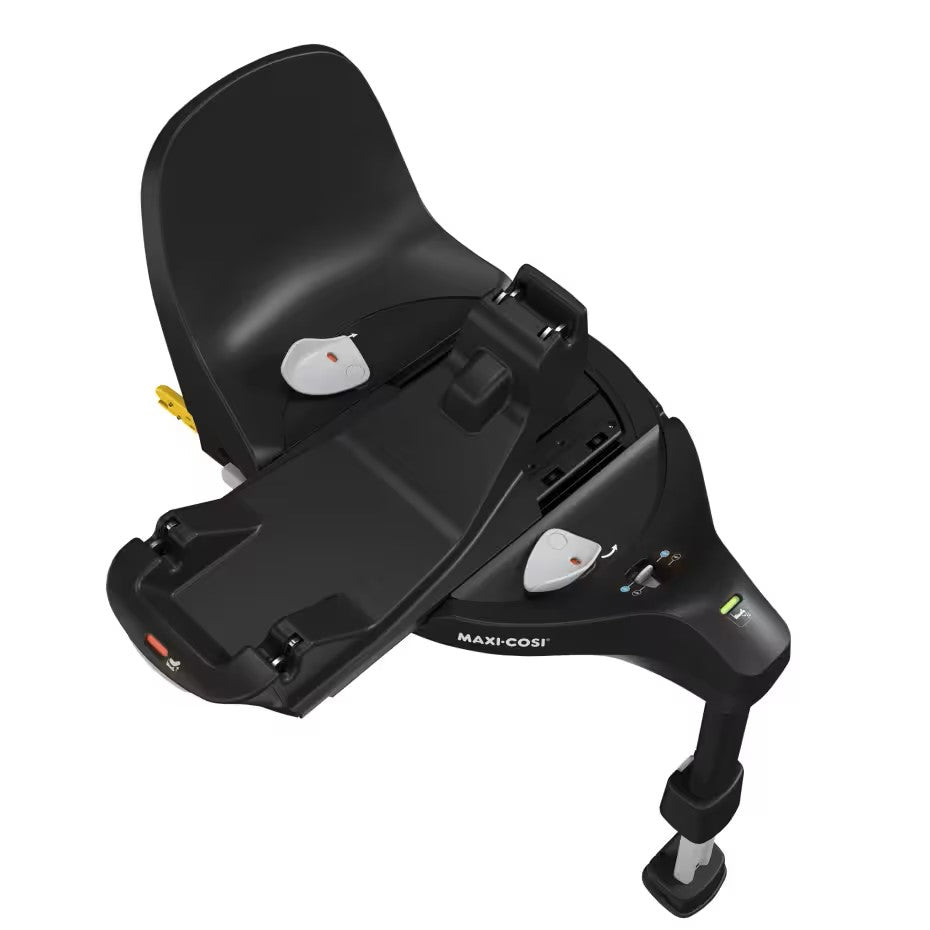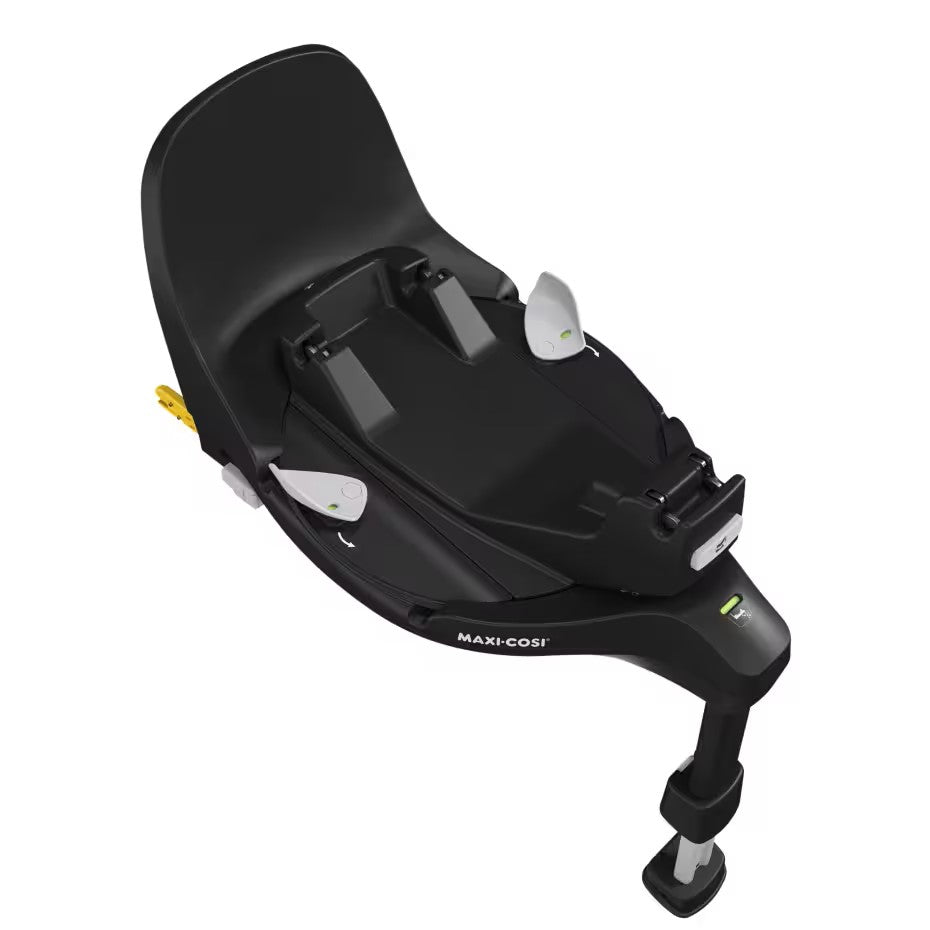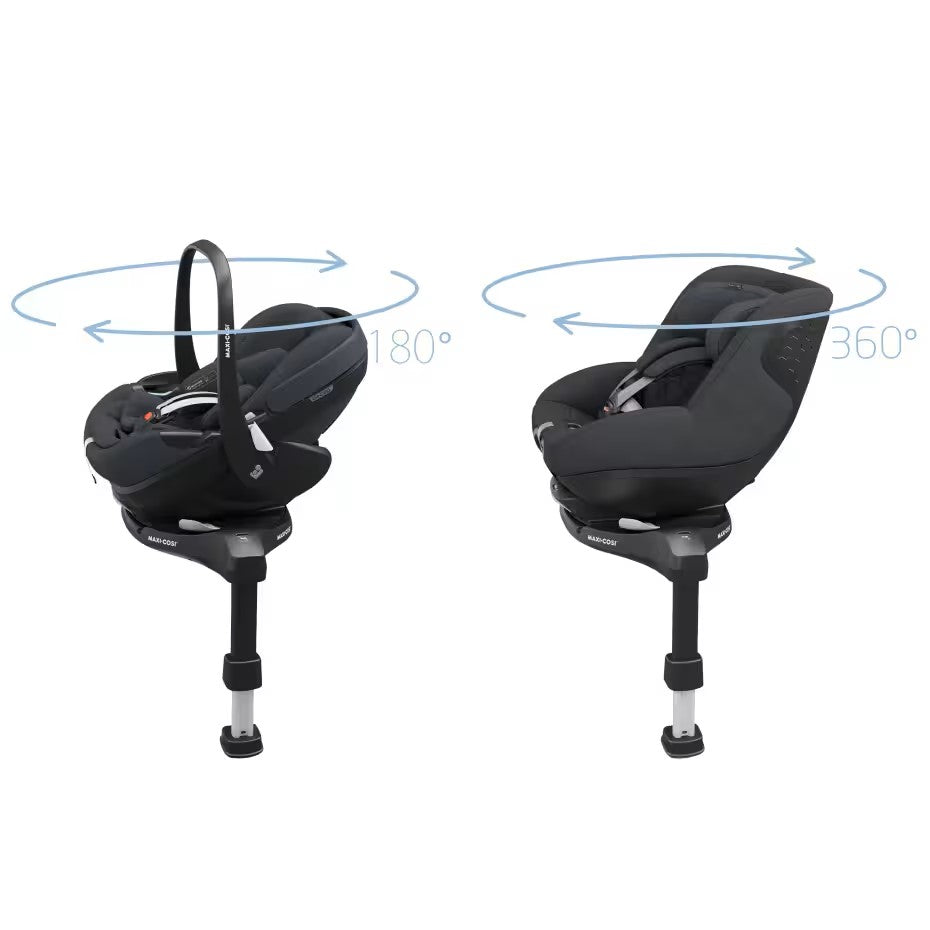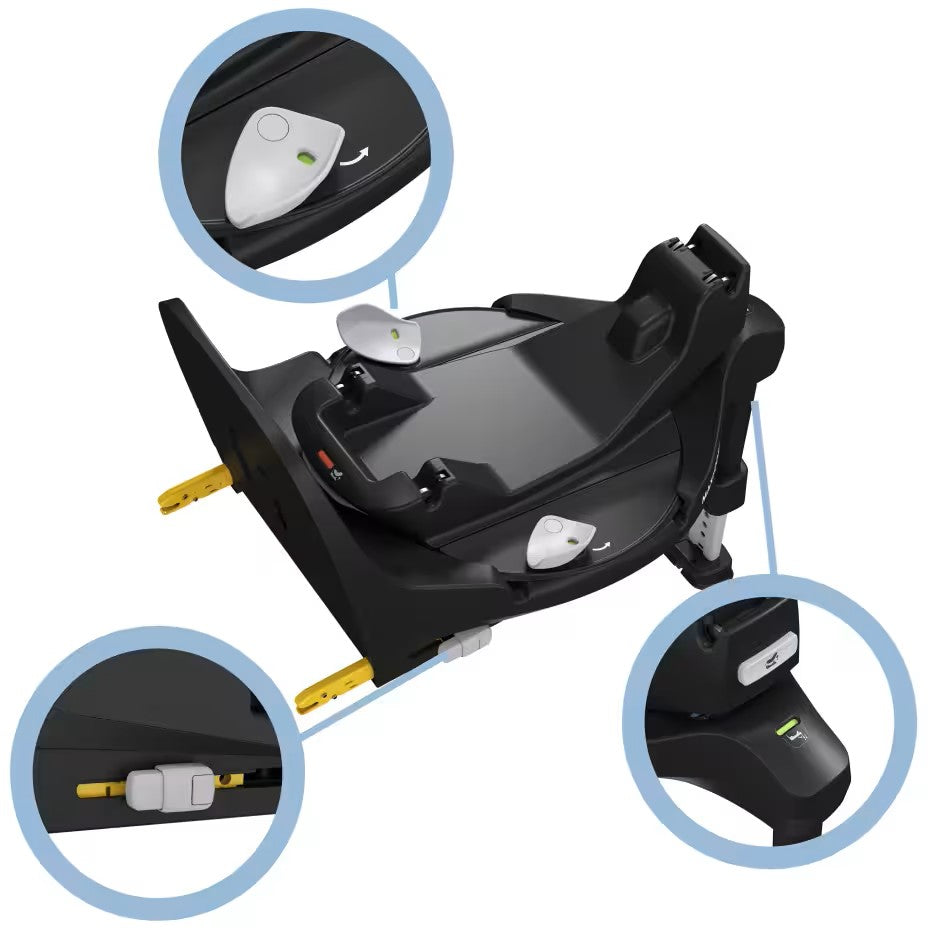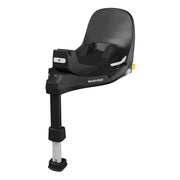Maxi Cosi Family Fix 360 Pro Base ft. Slide Tech
Maxi Cosi Family Fix 360 Pro Base ft. Slide Tech
SKU:20442
In stock
Couldn't load pickup availability
Overview
Overview
FamilyFix 360 Pro is the only car seat base that rotates and slides toward you using Maxi-Cosi’s patented SlideTech™ technology. Maxi Cosi's revolutionary sliding car seat technology makes getting your child in and out of the car easier than ever before. No backache, head bangs, or struggles; simply lock, slide, spin, and go!
- Innovative SlideTech™ technology
- One-hand FlexiSpin rotation
- Visual installation indicators
- AGR Seal of Approval
- Anti-misuse button
- Rearward facing from birth. Forward facing miminum from 15M up to 4 years.
Please note - The Isofix Base - Family Fix 360 Pro Base ft. Slide Tech is sold separately
What's Included
What's Included
User Guide
User Guide
Delivery and Returns
Delivery and Returns
- Delivery: Free within NZ on orders over $100 (excluding bulky items) or $8 standard shipping
- Returns: Accepted within 14 days of receipt with proof of purchase
- Some items are excluded from returns including sale items, hardware, car seats, prams, monitors and personal items - please click here for the full list.
Share this product
Recently Viewed Products
Related Blogs
A mindful approach to family meal times
Written by Kylie Stowe @melawholefoods In today’s busy modern society, the importance of sitting down together as a family at meal times and eating together and sharing about your day is a lost tradition for many. It is instead often a time that is busy, chaotic, and full of distractions with parents and children eating dinner at different times. There has been a plethora of research conducted around the benefits of family meal times, these benefits are said to include reduced rates of obesity, that adults tend to eat more slowly and often consume less food because they are engaged with other family members and discussion. This leads to less fast-paced mindless eating, chewing food adequately, and time for satiety ques to signal you are full more effectively. Something as simple as slowing down at meal times and chewing food effectively is an incredibly powerful health habit as this allows for the first phase of digestion to happen more efficiently. Cephalic phase digestion, meaning ‘of the head’ occurs at the sight, smell and taste of food and results in the excretion of approximately 20% of the gastric secretions required for digesting foods. Being mindful to slow meal times makes a huge difference in allowing the body adequate time for `these digestive phases to take place, chewing food is an incredibly important part of this process as it not only begins the mechanical breakdown of food but allows foods to be effectively mixed with saliva that is full of enzymes required to break down and digest foods. As a busy mum of four myself, I admit at times that when dinner rolls around at the end of a long day it feels like a chore, and can feel like a ‘job’ that I just want to be over as fast a possible. I have become aware that when I approach meal times in this way I end up feeling more stressed and don’t take the time to cook meals that are as nutritious as I would like, often resulting in me feeding the kids first which almost always leaves them not eating much of their dinner. My kids also don’t wind down as well when we approach meal times in this way and can easily flow on to a more challenging bedtime. In contrast, when we cook and eat together as a family, I usually feel less stressed, my children feel a sense of pride in having helped, and because I have put more thought into that meal time its generally a nutritionally superior meal. I almost always find the kids will eat more of their dinner and be far less fussy when meal times are approached in this way. I also notice my children are more relaxed at bedtime when we have had a relaxing family dinner together also. The research has also indicated that eating together builds stronger family relationships as it allows you all to come together and discuss your day, and feel connected and heard which helps to build a stronger sense of belonging which is thought to build self-esteem. Children learn through an example so role modeling good eating habits and table manners provides a great learning opportunity. As I always say aim for progress, and not perfection when it comes to health, if family meal times are not something that you currently do often in your house aim to implement a day a week and build on that. Don’t let it be a source of stress or guilt but instead a new fun tradition to start as a family. In my next blog, we will take a look at fun ways to get kids in the kitchen to teach them the valuable life skill of cooking. Kylie Stowe @melawholefoods Veggie-loaded meatballs with salad and kumara wedges Serves 4 Meatballs 400 grams of prime minced beef 1 grated carrot 1C of thinly sliced baby spinach 2 cloves of crushed garlic 1 egg 4 TBSPof grated parmesan 2 TBSPof almond flour 1 tin of Ceres Organics Cherry Tomatoes Handful of freshly chopped thyme Kumara wedges 4 small kumara cut into chunky wedges Drizzle of olive oil Seasoning Side salad 4 cups of salad greens 1C of halves cherry tomatoes 4 TBSP of toasted pumpkin seeds 4 diced gherkins ½ a diced cucumber ½ a diced capsicum Drizzle of balsamic vinaigrette Method Preheat the oven to 180c fan bake Combine and mix through all of the ingredients for the meatballs (besides the tinned tomatoes and thyme) shape into golf ball sized meatballs. Mix the tinned tomatoes and herbs then pop in the fridge while you prepare the kumara wedges. Toss the kumara fries in oil and seasoning. Line a shallow baking dish with baking paper then evenly arrange the kumara wedges and put into the oven. Remove the meatballs from the fridge, lightly brown in a cast iron pan and top with the tomato and herb mixture. Put into the oven. Bake both for approximately 20 minutes depending on your oven. While the kumara and meatballs are baking combine the salad ingredients. I like to serve mine with a dollop of coconut yogurt. Enjoy!
Learn moreFrom Hobby to 'Family' Business
As the first few of her fourteen children came along, our founder Jane Anne McAllister found that store-bought clothes just didn’t have the quality she wanted for her babies. They also lacked the strength to endure being passed from one baby to the next and still look good, or even stay intact. So she sourced the best fabrics and began making her baby clothes, lovingly embroidering each item by hand. That was the start of Dimples. Founded in 1992, today, we still dedicate the same care and time that Jane gave to those first garments. We’re one of the few clothing companies that still manufacture in NZ, which lets us make sure each garment is of the highest quality. It also means that our manufacturing is inherently ethical – no unknown, offshore factories with little oversight of working conditions, wages or environmental issues. So who makes our clothes? Our sewing machinists are part of our family, and all highly-skilled craftspeople. Karen has been with us for about seven years, putting her five decades of experience into every garment. Meet Karen – a Dimples sewer As a teenager, Karen finished school in December and reached school-leaving age in January, with dreams of training as a hairdresser. Her parents had other ideas – the hairdressing job didn’t start until mid-February, and they weren’t having her underfoot with nothing to do all that time. “I had to do what my parents told me to. So they marched me into town and got me a sewing job, and that’s where I stayed. I started in the city – 50 years ago. Yes, it was a craft.” ‘Made-in-NZ’ – an endangered species Back when Karen started her working life, a trained machinist could walk out of one job and into another almost immediately. That’s changed now. Textile, leather, clothing and footwear manufacturing make up only 5% of New Zealand’s manufacturing sector, down from 8% in 2008. [1] The number of jobs filled by paid employees in the clothing and knitted-product manufacturing industry fell nearly 60 percent – from 9,550 to 4,120 between 1986 and 2012 [2] . Taking pride in the quality As a professional machinist, Karen says the shift towards international production might make clothes cheaper, but they’re often very poorly constructed. The difference, she says, is that she was trained to complete a whole garment rather than doing piece-work. International garment factories tend to have a group of people just sewing collars, cuffs or hems, for example. “Everything’s done on the big stitch, no back-tacking. Within weeks the seams come apart.” At Dimples, we can turn out high-quality garments because we employ craftspeople like Karen – they have very high standards and the skills to back it up. Karen, in particular was known for her precision and was often used as a sample machinist. “Everything had to be spot on. It was an example – then other sewers had to make it exactly like the sample.” The Dimples family The inclusive culture we foster at Dimples helps our engaged and committed staff produce their best work in a happy, supportive atmosphere. Karen truly thinks the Dimples ‘family’ are lovely people to work for. “I’ve worked for a lot of people, and some of the other bosses were terrible. But Jane is just fantastic. When my grandkids were born, I got a beautiful gift for each baby. At Dimples, they care about you. They’re just nice people.”
Learn moreHow to Store a Car Seat Between Children
As parents, we often find ourselves marvelling at how quickly our little ones grow. One day, they're nestled securely in their capsule and before we know it, they're moving on to a convertible car seat. If you're planning to store a capsule for a future sibling, you’ll want to ensure it remains in excellent condition, ready to protect your next bub. One of the main concerns during storage is preventing mould, which can be harmful to your baby's health and damaging to the car seat. Also, be aware that car seats do have an expiration date. Check this before packing the seat away. Here are some storage tips to help keep a capsule clean and mould-free: 1. First Step - Clean Thoroughly Before you even think about storing the car seat, it’s crucial to clean it thoroughly. Mould thrives in dirty, damp environments, so you want to ensure the seat is as clean as possible. Remove Fabric Covers : Start by removing any fabric covers, cushions, and padding that can be taken off. Many of these can be machine-washed. Check the manufacturer’s instructions for your seat. Wipe Down You can spot-clean your harness and straps with warm water and a non-abrasive cloth (ensure you follow your instruction manual for advice as some manufacturers allow the use of soapy warm water). Vacuum Pay close attention to crevices that can accumulate crumbs, sand and dirt. Dry Completely : After washing, make sure that every part of the seat is completely dry before storage. Leaving any moisture behind is an invitation for mould growth. Some drying time in the sun is great as ultraviolet light is a natural disinfectant. Read More about cleaning a car seat here. 2. Choose the Right Storage Environment Where you store the car seat is as important as how you clean it. Cool, Dry Place : The storage area should be cool and dry. Avoid basements, garages, or attics if they’re prone to humidity, which can encourage mould growth. A closet or spare room inside your home, where temperatures are more regulated, is ideal. Elevated Position : Store the car seat off the ground to avoid potential contact with dampness. Packaging : Seal the seat in a plastic bag and then in a cardboard box for protective storage. If you’ve kept the original box the seat came in, that’s ideal. Ensure you have all the pieces together including the manual, any infant inserts and even the car seat adapters for your stroller. However you may want to store the fabric covers separately in the linen cupboard if you have one. 3. Check Periodically It’s a good idea to regularly check on the car seat during storage to make sure there’s no exposure to damp or pests. 4. Pre-Use Inspection Before you use the car seat for your next child, inspect it thoroughly. Check for any signs of damage, mould, or mildew. Give it another clean if necessary, and ensure that all components are still in good working order. Final Thoughts Storing a capsule car seat between children can save you money and reduce waste, but it requires careful cleaning and storage to keep it in top condition. Don’t forget to get it out of storage and do that pre-use check nice and early so you have everything sorted well before the new bub arrives.
Learn moreHow to Choose a Car Seat
How to Choose the Right Car Seat – When You're Spoiled for Choice Choosing a car seat can feel overwhelming – especially when your baby’s safety, comfort, and your lifestyle are all at stake. With capsules, convertibles, boosters and everything in between, how do you know where to start? Here's a practical breakdown to help you compare the different types of car seats and figure out what’s right for your whānau. Capsule Car Seats Best for: Newborns to approx. 12 months (up to 13kg depending on the brand)What they are: Rear-facing, portable infant car seats that click in and out of your vehicle. Why parents love them: Can transfer a sleeping baby from car to stroller without waking them. Easy to carry with a handle. Most work with a base that stays in the car – simple click-and-go. Things to consider: You’ll likely only use it for the first year. Weight matters – some are much easier to carry than others. Great options to compare: Nuna Pipa Next – lightweight (only 2.8kg) and super portable. Nuna Arra Flex – features three recline positions - including a near-flat 157° recline on the stroller or when used as a carry seat. Cybex Cloud T – lies near-flat outside the car, great for stroller naps. Maxi Cosi Pebble 360 Pro – ergonomic recline, 360° base for easy loading. Nuna Pipa Urbn – ideal for city living or rideshares with built-in ISOFIX, no base required. Nuna Cari Next – a lie-flat carrycot that’s also a car seat – perfect for naps and spinal support. Convertible Car Seats Best for: Birth to approx. 4 years (or longer depending on the seat)What they are: Seats that start rear-facing and convert to forward-facing as your child grows. Why parents love them: Cost-effective – you’ll use it for several years. Often more spacious and padded than a capsule. Can remain rear-facing for longer, which is safest. Things to consider: Not portable – stays in the car. Check your car for what installation method you need (ISOFIX or seatbelt). Some have rotating bases to make buckling in easier. Great options to compare: Nuna Todl Next – works with a rotating base for easy access. Nuna Revv – built-in 360° rotation, no separate base required. Nuna Rava - seatbelt installed, and known for its simple installation, generous legroom, and plush comfort. Ideal for families who want a long-lasting seat without the need for a base or ISOFIX. Cybex Sirona T – comfortable, safe and easy to use with excellent recline and rotation. All-in-One (Convertible + Booster) Best for: Birth to approx. 11–12 yearsWhat they are: Car seats that transition from rear-facing to forward-facing to booster seat. Why parents love them: One purchase that lasts for years. Saves money in the long run. Ideal for parents who don’t want to keep upgrading. Things to consider: Not portable – stays in the car. No rotating options available. Great options to compare: Nuna Exec – rear-facing from birth, forward-facing to booster mode up to 148cm / 54kg. Britax One4Life Slim – rear-facing to booster mode up to 160cm / 54.4kg. Booster Seats Best for: 4+ years (or as per height and weight guidelines)What they are: Forward-facing seats that position the vehicle seatbelt properly across your child. Why parents love them: Simple to use and install. Gives older kids a good seat height and a view out the window. Often more compact. Things to consider: Only suitable once your child meets minimum size requirements. Great options to compare: Nuna AACE LX – adjustable height, recline, and side impact protection. Britax Skyline – affordable, comfortable, and lightweight. Maxi Cosi Titan Pro – grows with your child from toddler through to booster stage. Other Key Considerations Car fit: Not all seats fit all vehicles – check for compatibility, especially if fitting multiple seats. Ease of use: Consider rotating seats if you struggle with lifting your child in and out. Installation method: ISOFIX is quicker and easier, but seatbelt installs offer flexibility for older vehicles or travel. However ISOFIX does have lower weight restrictions (generally around 18kgs). If a seat allows for both ISOFIX and seatbelt installation it can pay to opt for Vehicle Seat Belt installation as it eliminates having to switch installation method once weight limits are reached. Longevity: Weigh up whether you want a dedicated seat for each stage or one that adapts as your child grows. Need Help Choosing? Our certified car seat technicians are here to help you make the best choice for your family. Visit a Dimples store and get personalised advice, try seats in your car, and enjoy our free professional car seat fitting with purchase. You can also take our handy quiz to find out what might work best for you here Whichever seat you choose, safety and comfort come first – and we’re here to make sure you get both.Shop the full car seat range online or in-store today.
Learn more

